|
|
|
|
Belfries - the bell towers of North France |
|
Not a church
tower! Medieval
watch-towers Bells |
Famous statue in front of Calais Town Hall and belfry |
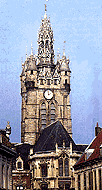 The famous belfry of Douai, whose bells still ring regularly. |
|
|
Mechanical
clocks |
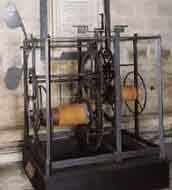 14th century clocks were made by craftsmen of hand-forged iron. Medieval clock makers installed them in towers, where they were worked by falling weights. This clock is in Salisbury Cathedral; restored to its original 14th century mechanism. |
||
|
All these early clocks were placed in towers because they worked by falling weights attached to a cord around a drum. No clock face, just
bells It would have been a status symbol for a town to have its own clock. |
 The escapement mechanism makes the "tick-tock" sound |
||
|
Town Halls - symbols of
medieval civic pride Many of today's belfries had to be rebuilt after damage or destruction in 20th century wars. |
|||
|
Belfries of the
Pas-de-Calais |
|||
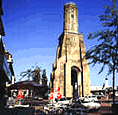 Calais' older belfry is the 75 metres-high Watch Tower, built in the square of the original walled town at the end of the 13th century. It was one of the few historic buildings in the port to survive amid the ruins of Second World War bombing. |
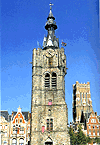 Built in 1346, the Belfry stands in solitary splendour in the Grand Place, bravely resisting the ravages of war and time, before becoming public property in the 21st century. |
|
|
Hesdin's belfry was built when Spanish King Charles-Quint had the whole town moved to a new site in 1554. In 1639, it was badly damaged by French cannons, and then demolished in 1774 because it was so dilapidated - before it was eventually restored in 1875! |
Boulogne's 47 metre high tower was built in 12th century by the Count of Boulogne as a castle keep. When the 13th century castle was built, this refuge was handed over to the town, which made it into their belfry. |
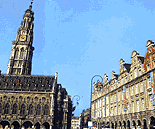 The 75 metre-high Gothic "Endless Belfry" of Arras soars above the Town Hall. Built between 1463 and 1551, it was destroyed in the First World War and afterwards carefully re-built. |
|
Places
to visit in Nord: |
Places
to visit in Pas-de-Calais: |
|
|
Interesting
clocks and bells: |
||
|
Medieval walled towns Hundred Years' War |
||
|
|
|
|
